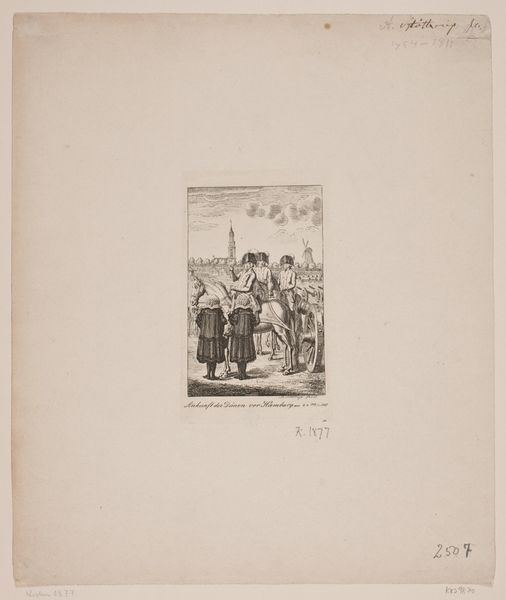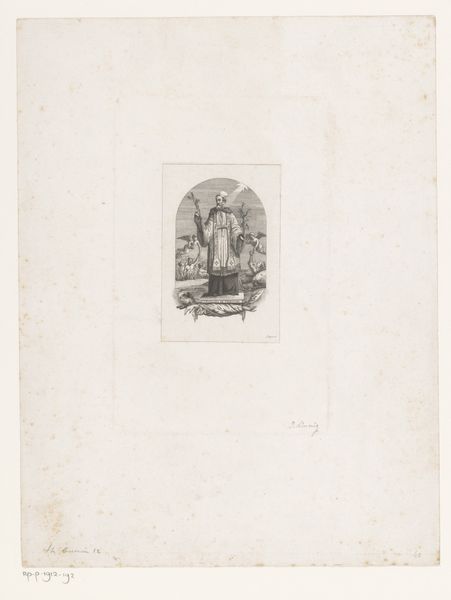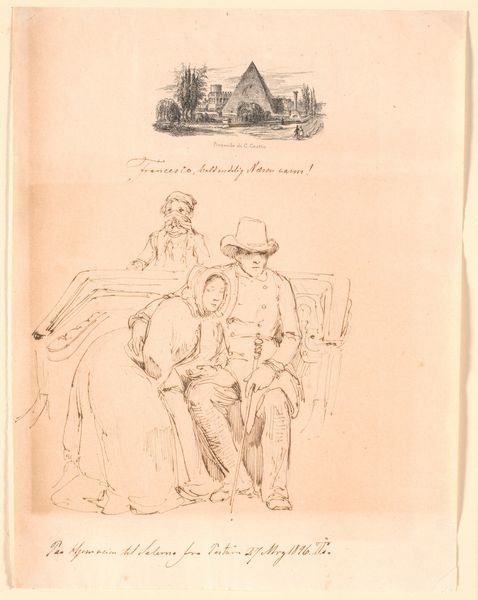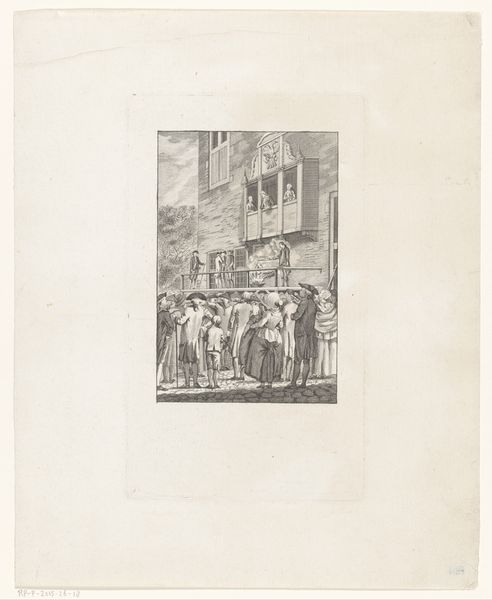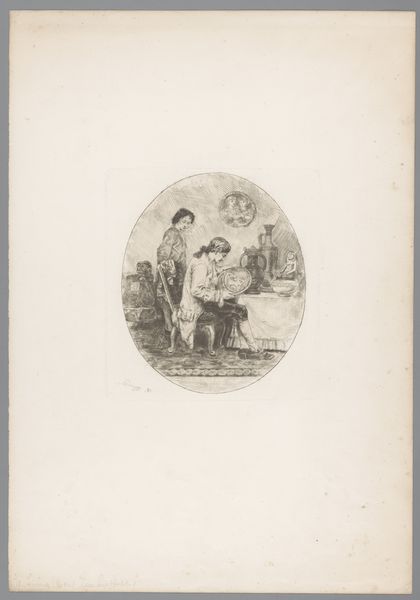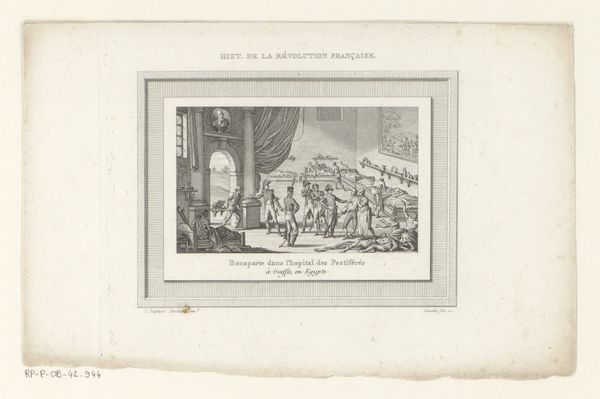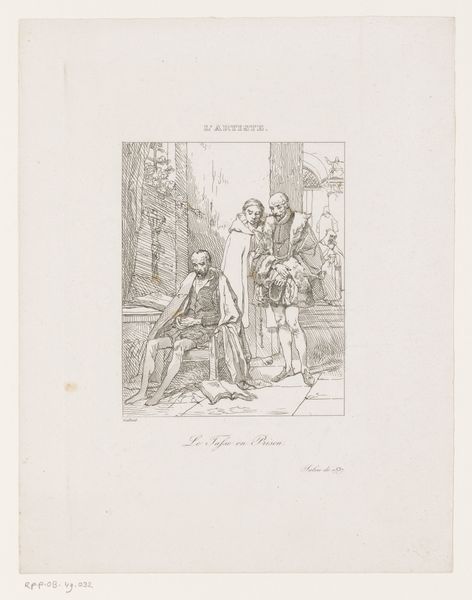
drawing, print, etching, engraving
#
portrait
#
drawing
# print
#
etching
#
caricature
#
figuration
#
romanticism
#
genre-painting
#
engraving
Dimensions: Plate: 9 3/4 × 7 7/8 in. (24.8 × 20 cm) Sheet: 11 1/8 × 8 9/16 in. (28.2 × 21.8 cm)
Copyright: Public Domain
Curator: Welcome. We are standing before Henry William Bunbury’s "Grown Gentlemen Taught to Dance," created in 1803. It's a print made using etching and engraving. You’ll find it here at the Metropolitan Museum of Art. Editor: Ah, the universal agony of learning something new! It strikes me immediately as comical but also, a bit sad. The gentleman in the center looks as though he's trying to defy gravity itself. Curator: The caricature is indeed central to understanding the work. Note how Bunbury uses line to exaggerate form and emphasize certain physical characteristics. Observe also the use of hatching to create the illusion of volume and shadow. Editor: Exactly, look at the almost pained expression! He’s suspended between mortification and determination, isn’t he? The supporting figures – the seated chap grinning mischievously and the focused fiddler – complete the scene. It feels like a frozen moment of awkward grace. Curator: We can read this work through the lens of genre painting, capturing a specific social moment. The style gestures towards Romanticism, though infused with satirical intent. Editor: I’m thinking about the music here. It must be horribly out of time with the dancer’s clumsy efforts. This piece speaks volumes about social hierarchies and expectations and also it speaks about the joy of dance despite all of our awkward attempts to learn the steps. Curator: Quite so. It serves as a witty commentary on social conventions. Editor: Well, looking closer it seems we've decoded yet another little narrative frozen in time. It makes one wonder if, beneath the powdered wigs, we all felt like the dancing gentleman at some point. Curator: A wonderful closing thought. The work demonstrates Bunbury's mastery of line and form but also reflects the universal struggle between ambition and self-consciousness.
Comments
No comments
Be the first to comment and join the conversation on the ultimate creative platform.
